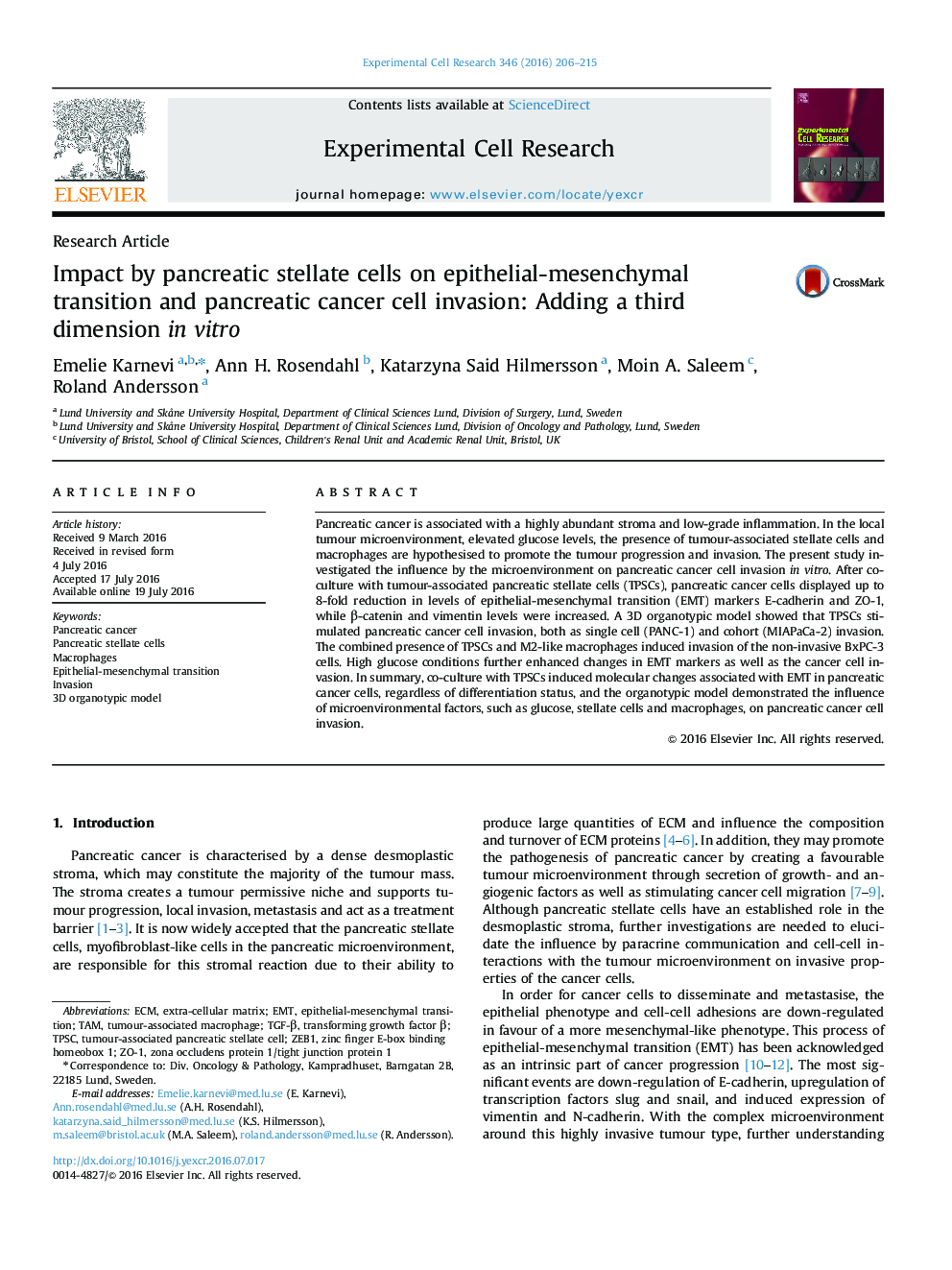| Article ID | Journal | Published Year | Pages | File Type |
|---|---|---|---|---|
| 2129923 | Experimental Cell Research | 2016 | 10 Pages |
•Pancreatic stellate cells stimulate EMT in pancreatic cancer cells.•Pancreatic stellate cells promote single cell and cohort invasion by cancer cells.•M2-like macrophages induce ECM invasion by non-invasive cancer cells.•High glucose conditions enhance cancer cell invasion and changes in EMT-markers.•The 3D organotypic model visualise the role of tumour microenvironment in vitro.
Pancreatic cancer is associated with a highly abundant stroma and low-grade inflammation. In the local tumour microenvironment, elevated glucose levels, the presence of tumour-associated stellate cells and macrophages are hypothesised to promote the tumour progression and invasion. The present study investigated the influence by the microenvironment on pancreatic cancer cell invasion in vitro. After co-culture with tumour-associated pancreatic stellate cells (TPSCs), pancreatic cancer cells displayed up to 8-fold reduction in levels of epithelial-mesenchymal transition (EMT) markers E-cadherin and ZO-1, while β-catenin and vimentin levels were increased. A 3D organotypic model showed that TPSCs stimulated pancreatic cancer cell invasion, both as single cell (PANC-1) and cohort (MIAPaCa-2) invasion. The combined presence of TPSCs and M2-like macrophages induced invasion of the non-invasive BxPC-3 cells. High glucose conditions further enhanced changes in EMT markers as well as the cancer cell invasion. In summary, co-culture with TPSCs induced molecular changes associated with EMT in pancreatic cancer cells, regardless of differentiation status, and the organotypic model demonstrated the influence of microenvironmental factors, such as glucose, stellate cells and macrophages, on pancreatic cancer cell invasion.
